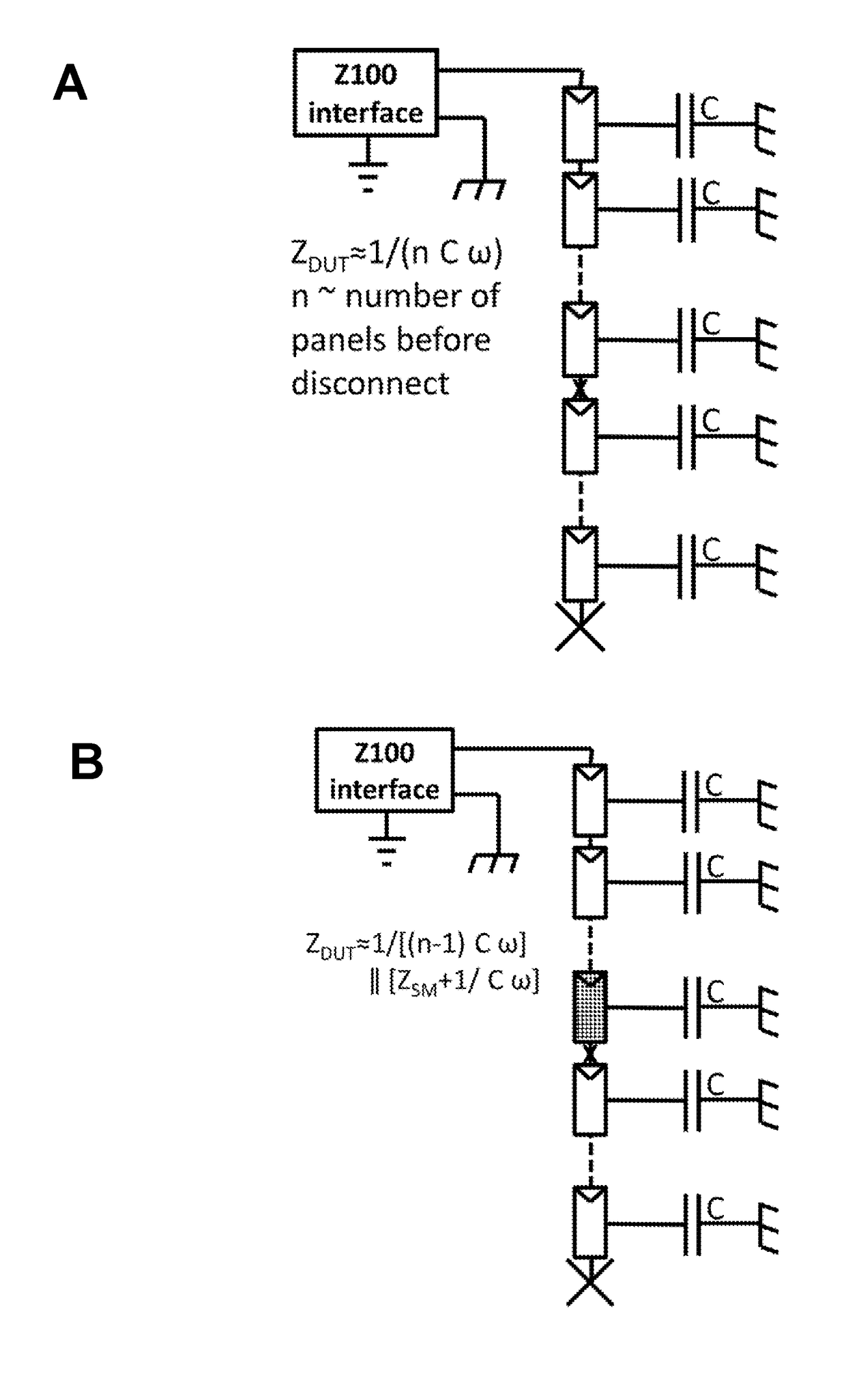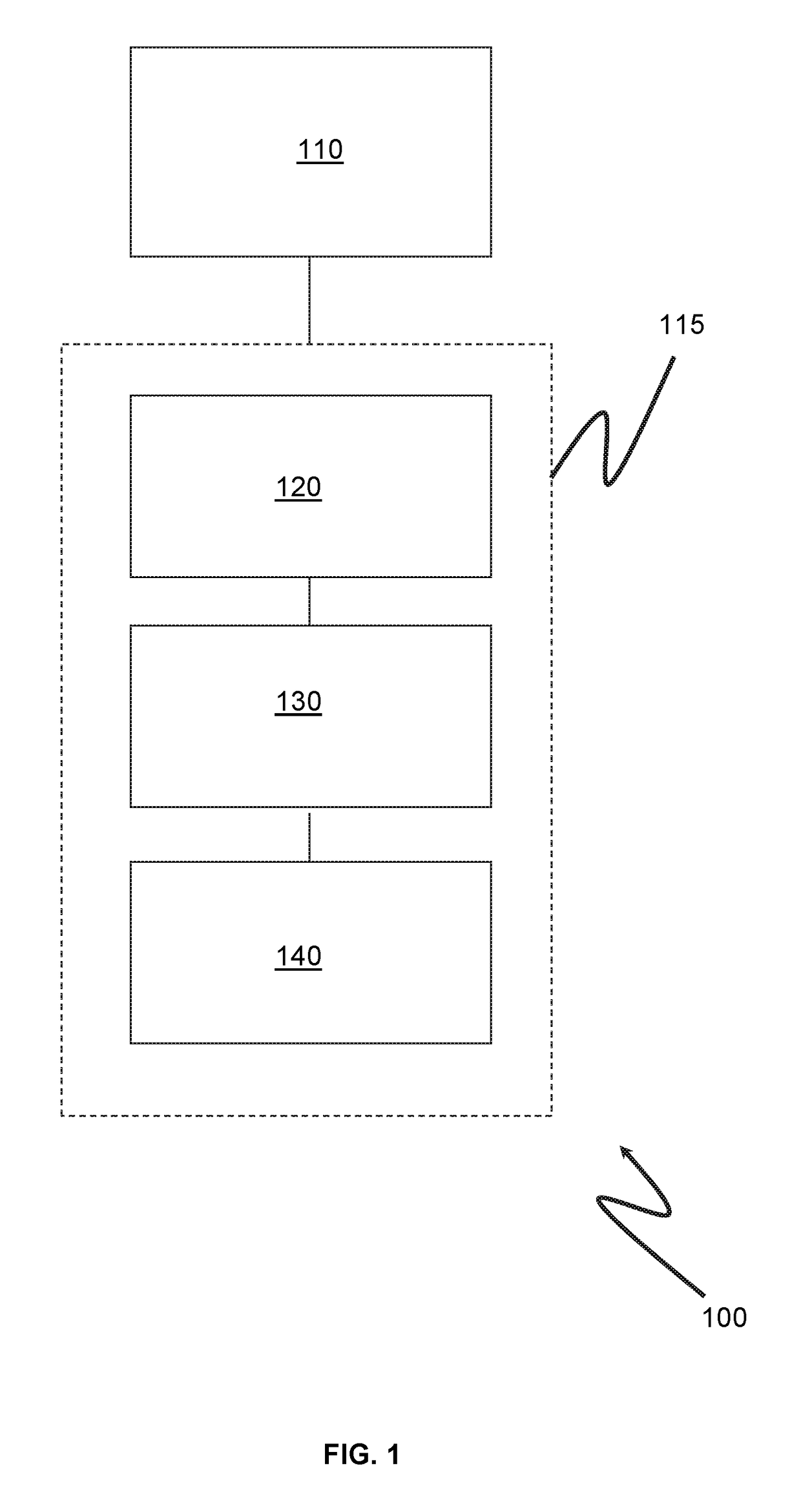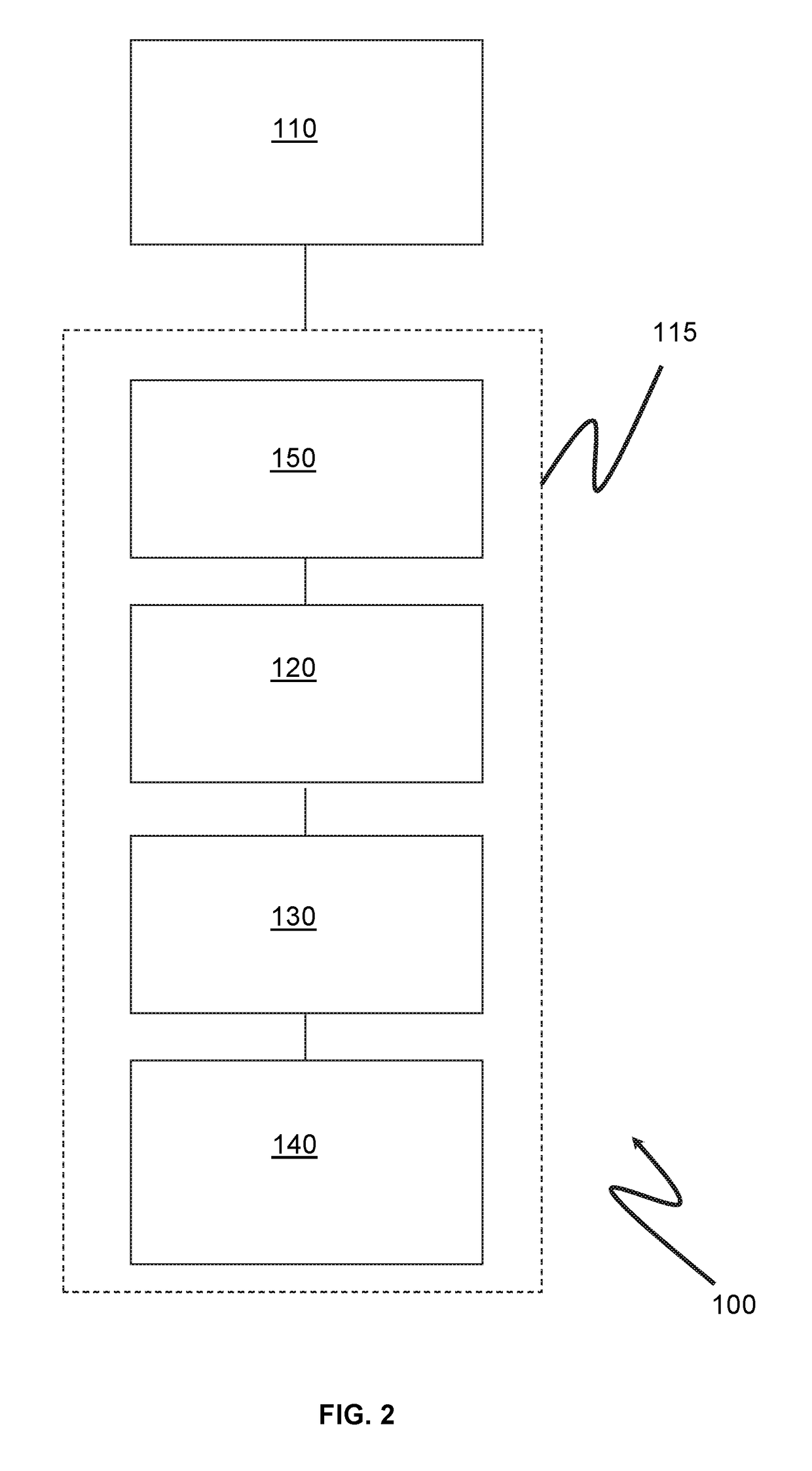Method and system of fault detection and localisation in DC-systems
a fault detection and fault technology, applied in photovoltaic monitoring, instruments, measurement devices, etc., can solve the problems of easy complexity of fault finding, assumed faults, and difficult fault localisation, and achieve reliable detection of faulty bpds
- Summary
- Abstract
- Description
- Claims
- Application Information
AI Technical Summary
Benefits of technology
Problems solved by technology
Method used
Image
Examples
Embodiment Construction
[0012]An objective of the invention is achieved by a method of fault detection and localisation of a fault in a DC-system comprising multiple serially connected DC-sources.
[0013]The method may comprise an act of connecting a test apparatus to at least one terminal of the DC-system and to DC-system ground.
[0014]The method encompasses at least one repetition of an act of applying a test AC-signal to the least one terminal of the DC-system, an act of detecting the response AC-signal to the test AC-signal on either one terminal alone and / or on DC-system ground; and an act of comparing the response AC signal with the test AC-signal to detect a fault and the location of the fault in the DC-system.
[0015]Thereby, a robust procedure and reliable procedure is disclosed.
[0016]If there are no ground faults, a prior art LCR meter could be safely connected to the anode or cathode and ground terminals. However such assumption or elimination of ground faults will complicate and disturb the fault de...
PUM
 Login to View More
Login to View More Abstract
Description
Claims
Application Information
 Login to View More
Login to View More - R&D
- Intellectual Property
- Life Sciences
- Materials
- Tech Scout
- Unparalleled Data Quality
- Higher Quality Content
- 60% Fewer Hallucinations
Browse by: Latest US Patents, China's latest patents, Technical Efficacy Thesaurus, Application Domain, Technology Topic, Popular Technical Reports.
© 2025 PatSnap. All rights reserved.Legal|Privacy policy|Modern Slavery Act Transparency Statement|Sitemap|About US| Contact US: help@patsnap.com



